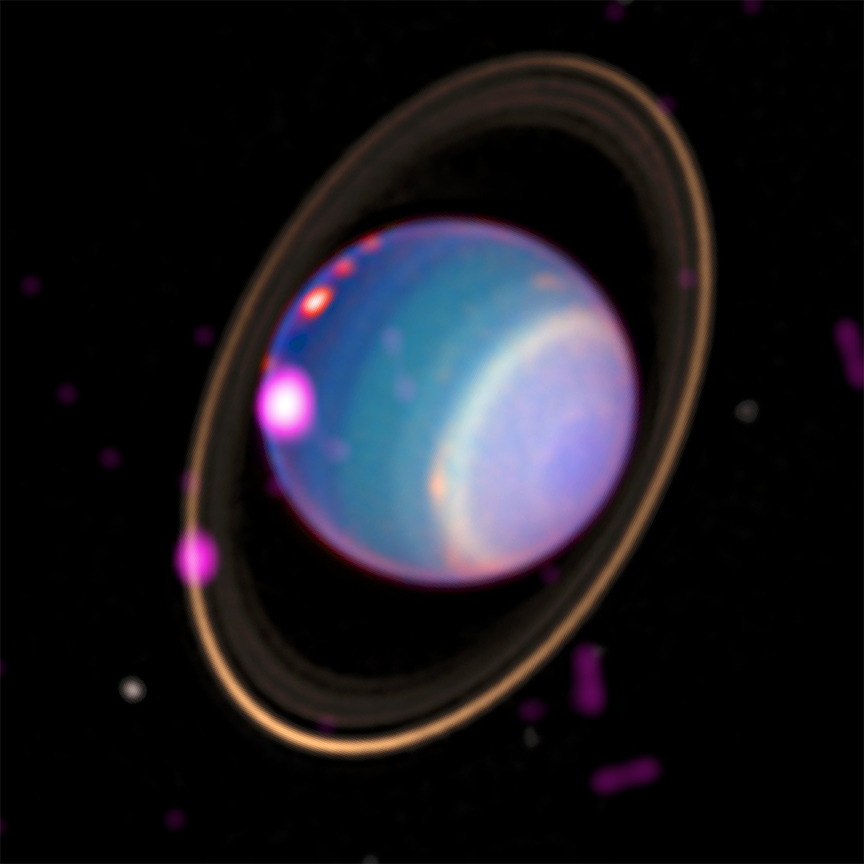
 Credit: X-ray: NASA/CXO/University College London/W. Dunn et al; Optical: W.M. Keck Observatory
Credit: X-ray: NASA/CXO/University College London/W. Dunn et al; Optical: W.M. Keck Observatory
Uranus X-rayed
Uranus was identified as a planet in 1781 by astronomer William Herschel, the first planet to be discovered in modern times. Herschel proposed naming the planet in honor of King George III, the "mad king", and many other names were propsed for the planet, but the suggestion of Uranus (the Greek god of the sky) by astronomer Johann Bode was eventually adopted (ensuring the planet's place as the butt of mischievous schoolboy humor for centuries). Uranus is an unusual planet, a ringed ice giant whose rotational axis lies nearly in the plane of the planet's orbit, making it appear as if the planet is rotating on its side. This weird orientation produces extreme seasons and storms as the planet revolves in its 84 earth year orbit. Though poorly understood, ice giants like Uranus (and its cousin Neptune) are fairly common in identified planetary systems outside the solar system. Now the Chandra X-ray Observatory has shown, for the first time, that Uranus is a source of X-ray emission. The image above shows an X-ray image obtained by Chandra's High Resolution Camera of the planet (in purple) superimposed on an optical image of Uranus from the Keck observatory. The origin of this X-ray emission is not yet known. Likely much of the emission is produced by X-rays from the Sun being reflected by the planet's atmosphere, but emission from polar aurorae or X-rays from the interaction of charged particles with ice in the rings of Uranus (a process that produces X-ray emission from comets) might also contribute.
Published: April 12, 2021
<
HEA Dictionary ● Archive
● Search HEAPOW
● Other Languages
● HEAPOW on Facebook
● Download all Images
● Education ● HEAD
>

Each week the HEASARC
brings you new, exciting and beautiful images from X-ray and Gamma ray
astronomy. Check back each week and be sure to check out the HEAPOW archive!
Page Author: Dr. Michael F. Corcoran
Last modified Tuesday, 27-Feb-2024 10:08:24 EST


